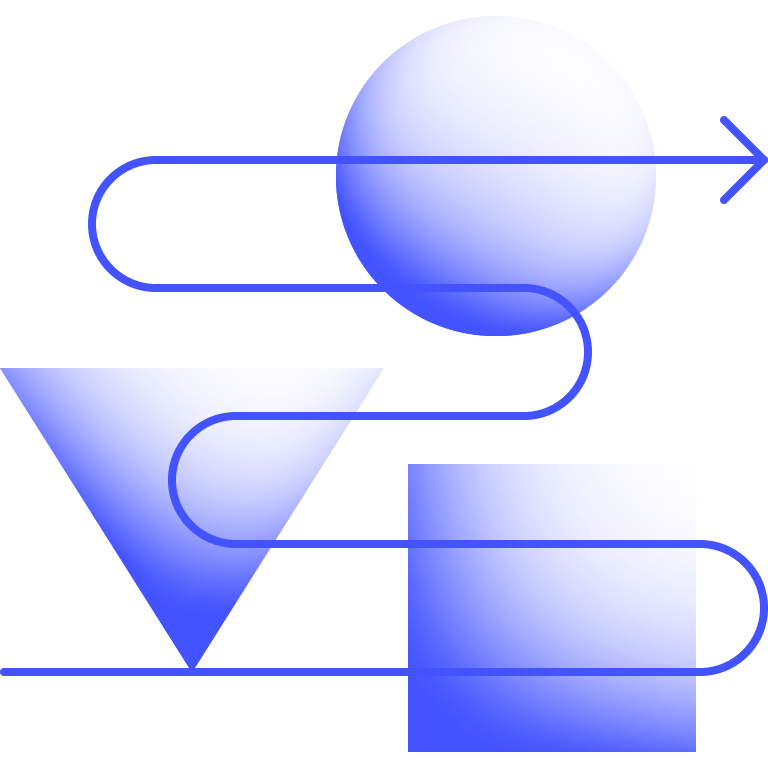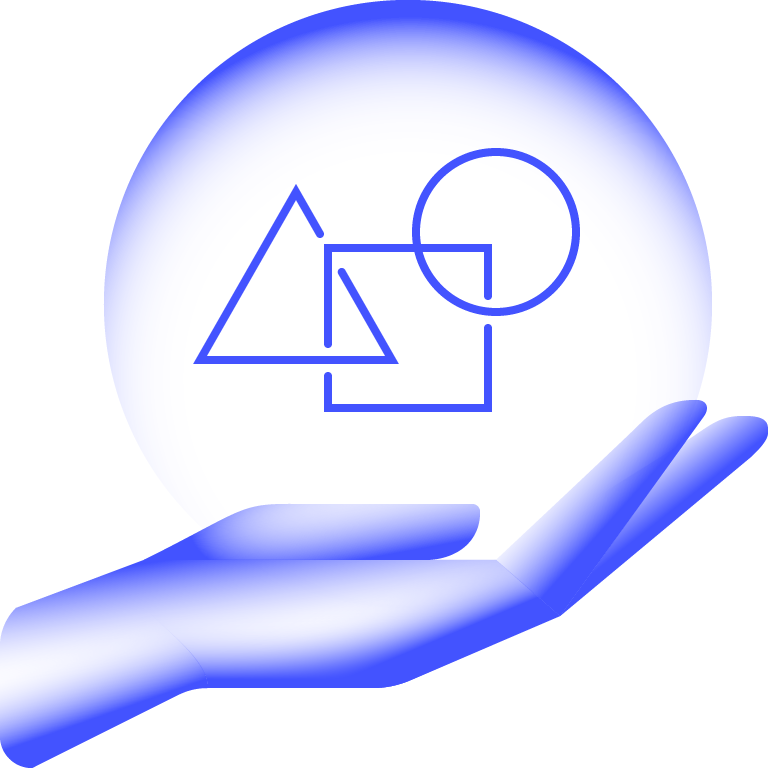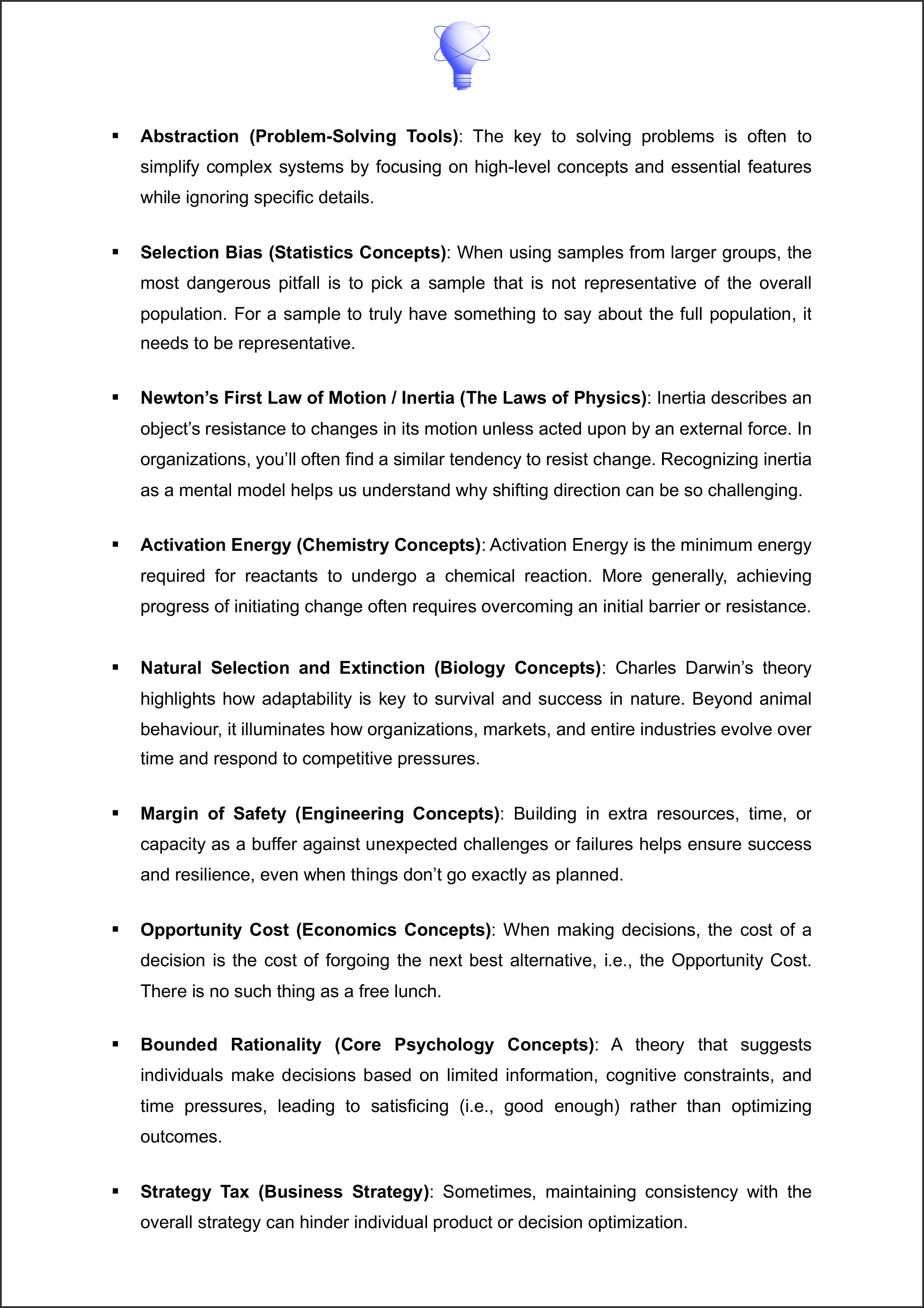Use mental models to make better decisions
![]() Learn how to problem-solve with mental models.
Learn how to problem-solve with mental models.
![]() 600 powerful mental models featured.
600 powerful mental models featured.
![]() 9 example case studies for training included.
9 example case studies for training included.
![]() Complemented by an AI-powered problem-solving tool.
Complemented by an AI-powered problem-solving tool.

The Mental Models Checklist

-

The Mental Models Checklist is a practical guide and a rich resource for anyone interested in harnessing the power of mental models to become a stronger problem-solver and better decision maker.
-

The Mental Models Checklist offers a clear framework for understanding what mental models are and how they shape the way we perceive problems and make decisions. It explores the basic principles behind good mental models, making their value clear and illustrating their practical uses.
-

The Mental Models Checklist outlines a step-by-step process for actually using mental models, transforming what can sometimes feel like abstract theory into tangible actions. You’ll learn how to select the right models for different types of problems, systematically apply them, and integrate them into your daily life.
-

The Mental Models Checklist includes an extensive catalogue of knowledge with material on 600 of the most powerful mental models known to man. The book includes 3 different checklists and 9 example case studies showcasing the power of mental models in action.
AI Problem Solving Tool
What are mental models?
-
Like many others, the author was introduced to the concept of mental models by Charlie Munger, Warren Buffett’s longtime business partner and vice chairman of Berkshire Hathaway, through his book Poor Charlie’s Almanack.
-
When Charlie Munger spoke of mental models, he simply meant the „big ideas in all the big disciplines“. By „big disciplines,“ he meant foundational academic fields like mathematics, physics, and biology. By „big ideas,“ he simply meant the core, fundamental concepts that encapsulate deep truths about how the world works.
-
These sorts of mental models can serve as cognitive frameworks that help us understand and simplify our messy reality. They guide how we process information, form predictions, and make decisions.
-
You can picture mental models as tools in a cognitive toolbox. A carpenter doesn’t rely on a hammer to solve every problem; instead, they choose the right tool for each task. Similarly, a diverse collection of mental models allows us to select the most appropriate framework for a given challenge.
-
Why study mental models? For us humans, it is akin to training a neural network on high-quality data. Well trained large language models adapt to new inputs and rapidly produce relevant outputs. Similarly, when our minds are stocked with a broad range of mental models, we can approach unfamiliar problems with greater agility and confidence. We won’t have to start from zero; making our problem-solving both more efficient and effective.

Learn more about mental models
Sign up your email if you wan’t to receive additional insights into mental models as a tool for problem solving and decision making.
